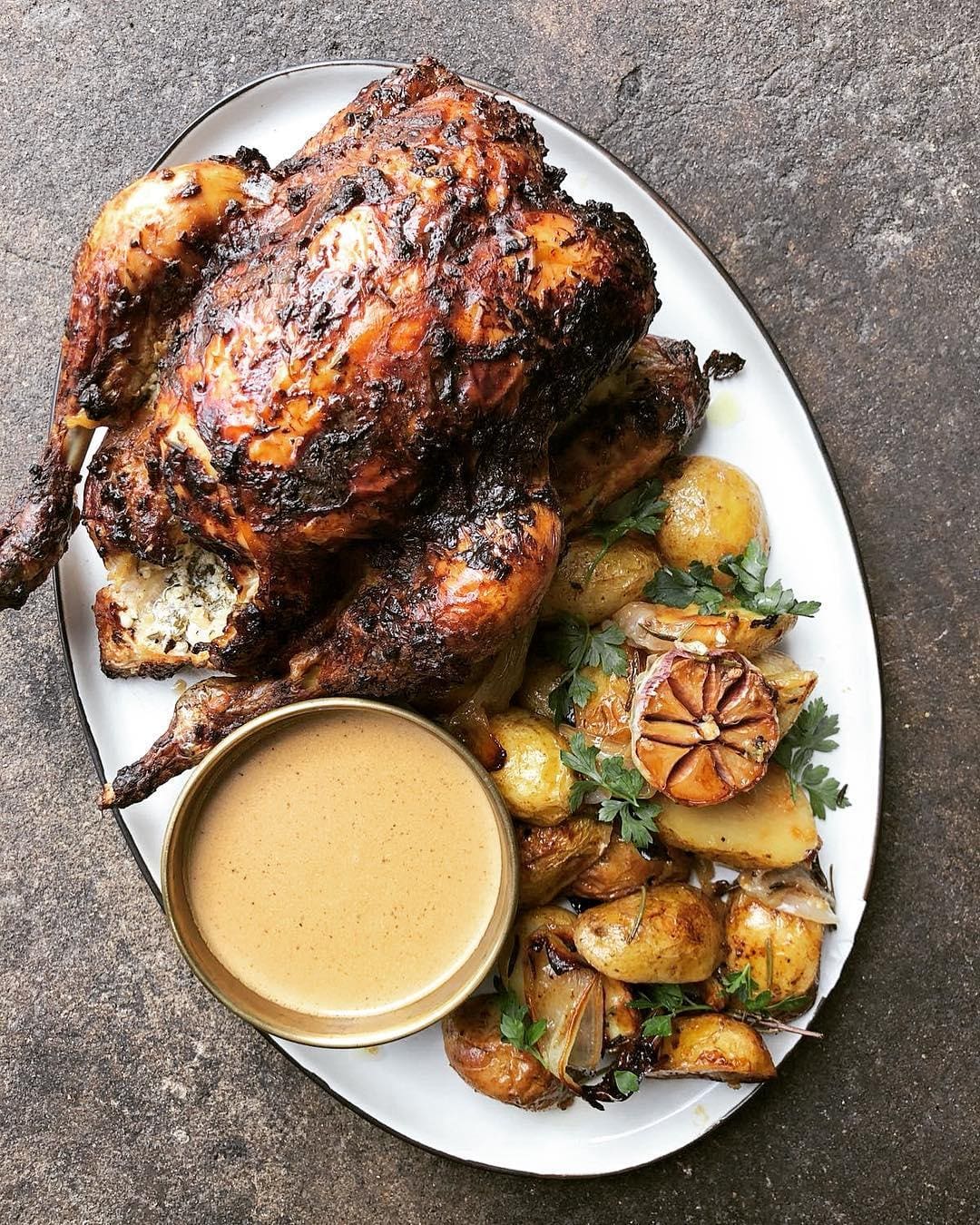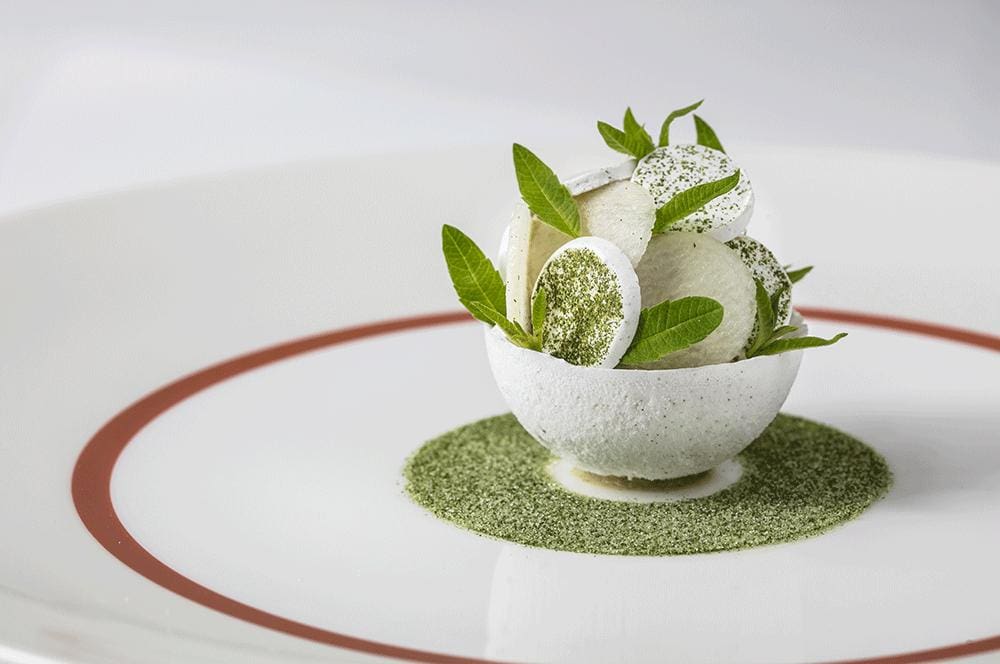
Heston Blumenthal on How to Cook the Perfect Christmas Dinner
Cook up the perfect festive feast with tips from Britain’s top chefs including Heston Blumenthal, Mark Hix, Clare Smyth and Yotam Ottolenghi
Turkey: Heston Blumenthal
Proprietor of Michelin-starred restaurants The Fat Duck and Dinner by Heston Blumenthal, the eccentric cook is surprisingly traditional when it comes to a festive feast.
“Preparing a turkey for Christmas begins the day before. I like to brine the turkey in an eight per cent aromatic salt solution and leave covered in the fridge for 12 hours or overnight to ensure that the turkey remains moist during the cooking process. Before roasting, remove the turkey from the brine and rinse it in cold running water for 15 minutes, then pat it dry to achieve a crispy skin when cooking.
It is quite easy to pair flavours with turkey as there are many things that can be used; from lemon, thyme and Herbes de Provence to honey, garlic and caramelised apples. I also place soft, unsalted butter inbetween the skin and the flesh. This year we have been playing around with removing the skin from the breasts in one piece as well as removing the breasts from the bone and doing a roulade.
During the initial roasting, I like to baste the turkey with a mixture of white wine, melted butter and a few thyme sprigs. Once the turkey reaches the desired temperature, remove and cover with aluminium foil and allow to stand for at least 30 minutes. Then crank up the oven and place the turkey back in for 10 minutes. Lastly, remove the foil and cook for another 10 minutes or until the skin is golden and crispy.”

Top Tip:
“Always make use of the leftover turkey stock. Using a wooden spoon, scrape all the bits from the roasting tray while over a medium heat, then add some white wine and reduce by half. Add any juices to the pan plus fresh chicken stock to complement and reduce to a gravy consistency – I also like to add grain mustard.”
Vegetables: Mark Hix
The cook, food writer and HIX restaurateur commends the classic brussel sprout.

“I think Christmas is a time when we all go back to what we know and love, so I don’t expect things to get that adventurous. This year we may see the addition of kale hearts, perhaps. I love the traditional dishes: brussel sprouts and chestnuts served with roast potatoes, mushrooms, and a selection of small roasted game birds.
In terms of flavouring your vegetables, the popularity of Middle Eastern spices doesn’t seem to wane, and along with African flavours these spices will be popular this Christmas.
With so many dishes to think about, it’s always good to plan in advance, but I wouldn’t prepare your vegetables too early because you want to keep their freshness.”

Top Tip:
“I always find it useful to plan the day before, making a prep list in order of jobs to be done – and it helps if you don’t start drinking too early.”
Potatoes: Yotam Ottolenghi
The Israeli-British chef of Nopi and Ottolenghi fame gives the humble spud a simple but effective makeover.

“For the perfect Christmas spud, Maris Piper is a great all rounder as it has quite a creamy texture that works well for both roasting and mash. King Edward is also an excellent variety for roasting. It has a perfect fluffy texture for a Christmas roasted spud.
I like to parboil the potatoes first for about 10 minutes, then carefully toss them in a colander to fluff them up a bit. You get extra crispy surfaces with all the bits sticking out while the inside stays soft and creamy. Make sure the potatoes are well coated with your choice of fat and don’t overcrowd the pan. If you do, the potatoes will steam rather than roast. Adding a little polenta to the pan will also increase the crisp levels.
I prefer to avoid fads, but oregano and feta are a winning combo with potatoes; it’s such an addictive flavour. If you’re adventurous, add some miso before roasting and sprinkle Nori seaweed at the end for a Japanese Umami twist.
As an alternative to roast potatoes, boil new potatoes or Yukon Golds then crush them onto a hot pan to get a beautiful gold crust. Add whole garlic cloves and some butter at the end – comforting and delicious!”

Top Tip:
“Roast your vegetables whole – avoid peeling and chopping. Just toss vegetables in oil and aromatics then roast slowly in the oven. Minimum fuss, delicious vegetables and plenty of time for an extra drink with the family.”
Pudding: Clare Smyth
Chef patron at Core and the first female British chef to hold three Michelin stars, Smyth keeps it sweet with seasonal produce.

“This Christmas, go for something fun, festive and a little unexpected. At Core, our pear and verbena Poire Williams sorbet dessert is a slight nod to the more classic vacherin, made of delicious layers of meringue and ice cream.
I like using spices at Christmas and a real winner is a warm spiced rice pudding. You can also never go wrong with a tarte tatin.
Try to use produce that is fresh, in the height of season, and available on your doorstep. In December, apples, pears, cranberries, satsumas and tangerines are good choices. There are also lots of speciality chocolate producers around to try out.
When it comes to cooking and its presentation, I am always inspired by nature. Depending on the dessert, I use fresh ingredients for garnishes, such as mint leaves, evergreen herbs – like lavender and lemon thyme – and fresh fruits, including cranberries and pomegranate seeds.
If possible, try out your recipe beforehand; that way you can see if it works for you and if you need to do anything differently for Christmas.”

Top Tip:
“If you want a slight twist on a classic, make a frozen parfait with Christmas pudding. This can easily be made in advance.”
Cheese: Hélène Darroze
The Connaught chef sticks to her French roots for le plateau de fromages.

“Nothing beats a great selection of cheeses. From goat’s to sheep’s to cow’s, the larger the selection the better – and always include a decadent truffle cheese.
I like to serve cheeses of different maturity such as Comté and P’tit Basque. Some have matured for 10 months and others for 24 months. I serve them whole to make sure everyone is around the table sharing together and it’s important that each cheese has its own knife.
I suggest serving blue cheese with pears and for sheep’s milk cheese, black cherry jam pairs nicely. Dried fruits and nuts go with all cheese types or, alternatively, you can’t go wrong with pairing a pain de campagne (French sourdough bread) with your cheese selection.”

Top Tip:
“Don’t get rid of your cheese rinds – save harder rinds such as those of Parmesan cheese to infuse into sauces for extra flavour.”










